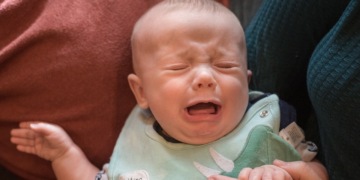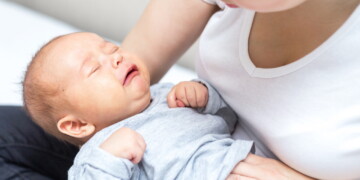In June 2023, the American Academy of Pediatrics (AAP) issued a warning to parents interested in getting “sleep sacks” for their babies. These sleep sacks are essentially weighted blankets designed for swaddling and comfort, but they also elevate the risk of sudden infant death syndrome (SIDS) through asphyxiation.
This warning is a reminder of the constant effort that medical researchers make to prevent SIDS, a medical circumstance with an exact cause that remains unknown despite being one of the leading causes of infant mortality.
Understanding “Crib Death”
SIDS is defined as the unexplained and abrupt death of children before their first birthday. You may have heard SIDS being called “crib death” because it often happens to babies wherever they usually sleep, but there have been some reports about SIDS happening to babies when they are in the arms of their parents.
According to statistics compiled by the Kaiser Permanent health maintenance organization, annual SIDS rates are approximately 3,500, which works out to about one in 1,000 babies in the age cohort between two and 12 months.
In April 2023, the Journal of Contemporary Pediatrics published an editorial opinion related to the higher SIDS rates reported in the U.S. during the first year of the COVID-19 pandemic.
The substantial increase of 15% over 12 months was certainly worrisome at the time; some of the initial conclusions were directly related to the various effects of the pandemic, and the higher incidence was reported after five years of steady declines.
Upon revisiting the data, however, the study authors have clarified their conclusions to reflect a change in diagnostics and reporting.
Cause of Sudden Infant Death Syndrome
Despite the significant body of research on SIDS, physicians have yet to reflect on the exact cause of crib death.
In terms of medical mysteries, SIDS is as cryptic as it is rare; it is similar to autism and fibromyalgia insofar as lacking a chain of causation, and its forensic pathology may range from asphyxiation to stroke and from undetected congenital issues to inadequate development of the brain stem.
While it is true that the majority of postmortem examinations of SIDS strongly suggest sleep apnea, the majority of SIDS autopsies are summarized as undetermined or unknown unless there are accidental factors to rule out everything except sleep apnea.
Crib death is not limited to babies; sudden death syndrome (SDS) affects puppies while sudden acquired death syndrome (SADS) impacts kittens, and the causes are also unknown.
Preventing SIDS Through Sleep Apnea Awareness
SIDS is the most devastating experience that parents can endure. There is an inherent fear, particularly among women whose lives are blessed by the arrival of their firstborn babies, of suddenly losing them while they sleep.
This is the worst feeling for parents, and learning about the medical mystery surrounding SIDS does not make things any less frightening; nonetheless, there is good news for concerned parents thanks to the work of Patricia Tackitt, an investigator at the Wayne County Medical Examiner Office in Michigan.
From 2001 to 2011, Tackitt went to hundreds of SIDS scenes around the Detroit metropolitan area, and she determined that the majority of cases involved what she described as unsafe and harmful practices.
Tackitt’s forensic work often involved interviews with parents and caretakers of SIDS babies. Through these interviews, she noticed a pattern of environmental factors that greatly elevated the risk of accidental suffocation, which is a common cause of sleep apnea, a condition in which breathing stops briefly during sleep.
In SIDS, sleep apnea can lead to a buildup of carbon dioxide in the blood, thus causing the heart to stop beating.
Tackitt has argued in favor of promulgating new criteria that would classify suffocation accidents among babies separately from SIDS; more importantly, she became a strong advocate of SIDS prevention through awareness of sleep apnea in the context of early human development.
As previously mentioned, sleep apnea is conditioned and underscored by brief episodes.
According to the National Sleep Foundation, about 20% of us experience at least mild symptoms of sleep apnea several times each night; these are short and generally unproblematic breathless periods that may be accompanied by snoring fits.
Moderate and severe sleep apnea can be problematic among adults, but it can also be easily diagnosed and treated before it becomes chronic, critical, or fatal.
When sleep apnea develops in babies, things are not only different but also far more complicated.
Babies born with a perfect Apgar score can silently develop sleep apnea during their first few months; similar to adults, the majority of babies with sleep apnea will not be greatly compromised by this condition, however, this assumes the absence of environmental risk factors.
SIDS prevention largely boils down to understanding that 20% of babies will suffer sleep apnea; for the most part, they will instinctively learn to deal with this condition by positioning themselves so that their airways are clear and their lungs can expand.
Adults do the same, but with greater strength and efficiency through years of reflexive practice. When environmental factors impede babies from self-relieving their sleep apnea episodes, the risk of accidental suffocation and SIDS increases exponentially.
Unsafe environmental factors refer to anything that can make babies fall into prolonged sleep apnea; we are talking about how they are positioned and swaddled.
The Back to Sleep and Safe to Sleep Campaigns
In 1994, the National Institutes of Health launched the Back to Sleep campaign to inform parents about SIDS prevention through the simple act of making sure that babies are on their backs at all times while sleeping.
In 2012, the campaign was expanded with other recommendations under the name Safe to Sleep. Putting babies to sleep on their backs is still at the heart of the campaign, but there is also a new focus on avoiding items such as the aforementioned weighted blankets.
Keeping soft objects and loose bedding out of the sleeping area is just as important as swaddling the baby in ways that preclude them from rolling over on their stomachs.
Take a look around the crib or bed and check for anything that could block your baby’s nose and mouth; for example, larger plush toys and comfort blankets.
There should be nothing in the sleeping spot that would cause your baby to roll into a face-down position.
Conclusion
Sudden infant death syndrome typically occurs within the first year of a child’s life. While the cause of SIDs is not known, many theorize that it could be the result of sleep apnea.
Awareness of sleep apnea and the importance of safe sleep practices can go a long way toward preventing SIDS.
Parents and caregivers who understand the risks of SIDS are more likely to follow safe sleep practices.
Jenny Fries, a freelance writer, specializes in writing about technology, business, and health. She offers freelance blogging and content writing for SEO. When she’s not writing, Fries likes to travel, cook, and write vacation plans.




























